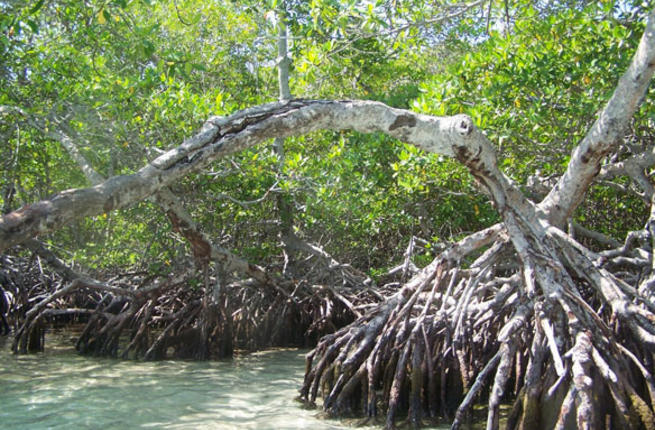Thousands of mangroves are planted every year on Sir Bani Yas island and each one of them “belongs” to a tourist who has been there. Part of the environmental conservation programme of the eco-tourist island, Anantara, which manages both the hotel and the two villa lodges on Sir Bani Yas, is asking every person arriving there to write their name on a piece of paper if they wish to have a mangrove seedling planted on their behalf.
“It is such a great idea! While we were waiting for bags and paperwork to be organised, we had a tour of a small gallery in the arrival building, telling us about the history, geography and various facts about the island,” said Laura Higgins, am Australian resident in Abu Dhabi, while on a weekend break with her family on Sir Bani Yas.
“This is how we learnt about the crucial role mangroves play in the sustainability of the island. We all wrote our names on the cards provided – myself, my husband and our two daughters,” she added.
The 87 square kilometres Sir Bani Yas is the largest natural island of the emirate, about twice the size of 43 square kilometre neighbouring Delma, one of the very few islands in these waters still inhabited.
Carrying the name of Bani Yas tribe, of whom Al Nahyan royal family belongs, the fresh water wells on the island had long dried and for years the island remained deserted. This was not the case in ancient times, though, as human settlement dating back to the Bronze Age is proved in the 36 archaeological sites found on the island, including a pre-Islamic 1,000 years old monastery.
It was only 35 years ago that life returned to Sir Bani Yas. When the last Arabian Oryx was extinct from the wild, Shaikh Zayed bin Sultan Al Nahyan brought a couple of specimens from a zoo in US on the island, trying to revive the species.
The plan worked and the animal sanctuary grew, both with indigenous species and other African and Asian animals, including cheetahs and Shaikh Zayed’s favourite, the giraffe. The scheme was so successful that over 10,000 animals have been relocated and freed onto the mainland.
Shaikh Zayed also brought about three million different trees to be planted here, including ghaf, palm trees, cedar and miswak, the toothbrush tree. An impressive two and a half million of them survived, among them being the olive orchard that surrounds the royal palace.
His legacy includes six mangrove forests as well, which keep growing since 2008, when the island reopened to tourism and visitors’ wish to have mangrove seedlings planted on their behalf is taken seriously by the staff.
“A unique element to our conservation programme is planting a mangrove tree for each visitor to Sir Bani Yas. This not only offsets any changes but also helps maintain the ecology on the island,” said Christian Gerart, general manager of Anantara Sir Bani Yas Island Resorts.
Only about 60 per cent of the mangrove seedlings planted have a chance of survival, but the mangrove forests are well established and growing.
More recently, as part of the island experience, Anantara invites participants of its Culture and History Tour to plant their own mangrove seedling at the end of the excursion. They may give the seedling a name, leaving a note when planting it into the shallow water.
Source: Khaleej Times
By: Silvia Radan











